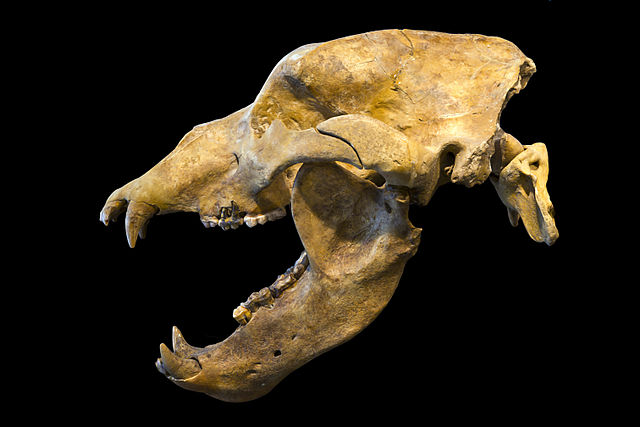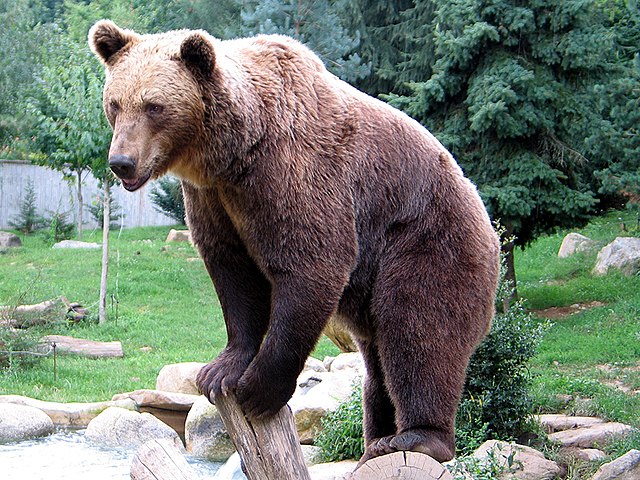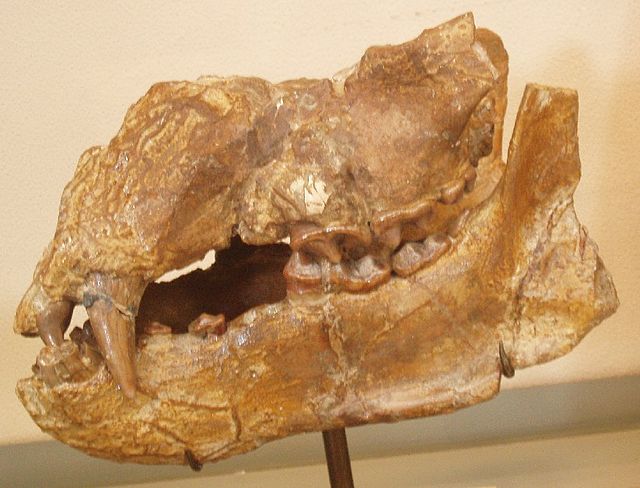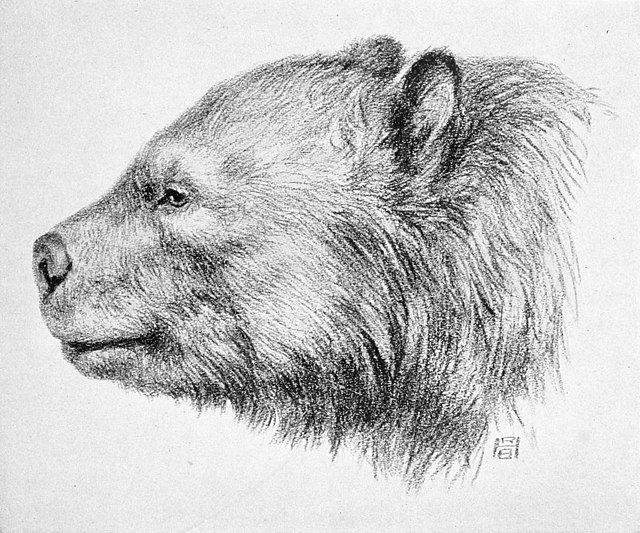The cave bear is a prehistoric species of bear that lived in Europe and Asia during the Pleistocene and became extinct about 24,000 years ago during the Last Glacial Maximum.
Cave bear
Rearing Ursus spelaeus skeleton AMNH
Life restoration.
Skull of Ursus spelaeus: Cave bears lacked the usual two or three premolars present in other bear species.
Bears are carnivoran mammals of the family Ursidae. They are classified as caniforms, or doglike carnivorans. Although only eight species of bears are extant, they are widespread, appearing in a wide variety of habitats throughout most of the Northern Hemisphere and partially in the Southern Hemisphere. Bears are found on the continents of North America, South America, and Eurasia. Common characteristics of modern bears include large bodies with stocky legs, long snouts, small rounded ears, shaggy hair, plantigrade paws with five nonretractile claws, and short tails.
Bear
Plithocyon armagnacensis skull, a member of the extinct subfamily Hemicyoninae from the Miocene
Life restoration of Arctotherium bonariense
Fossil of the cave bear (Ursus spelaeus), a relative of the brown bear and polar bear from the Pleistocene epoch in Europe







